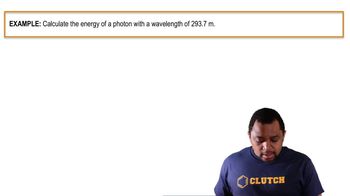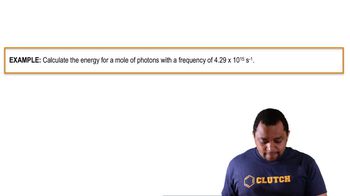9. Quantum Mechanics
The Energy of Light
9. Quantum Mechanics
The Energy of Light
Showing 5 of 5 videos
Additional 4 creators.
Learn with other creators
Showing 7 of 7 videos
Practice this topic
- Multiple Choice
Calculate the energy (in nJ) of a photon emitted by a mercury lamp with a frequency of 6.88 x 1014 Hz.
1946views10rank3comments - Multiple Choice
A light ray has a wavelength that is 835 µm contains 6.32 x 10-3 J of energy. How many photons does this light ray have?
1581views14rank4comments - Multiple Choice
How much energy (in kJ) do 4.50 moles of photons contain at a wavelength of 705 nm?
1503views9rank1comments - Open Question
How are wavelength, frequency, and energy related for photons of light?
928views - Open Question
What is the longest wavelength of radiation with enough energy to break carbon-carbon bonds?
743views - Open Question
Hospital X-ray generators emit X-rays with wavelength of about 15.0 nanometers (nm), where 1nm = 10−9 m. What is the energy of a photon of the X-rays?
607views - Open Question
Calculate the energy of the violet light emitted by a hydrogen atom with a wavelength of 410.1 nm.
560views - Multiple ChoiceWhat is the wavelength in nanometers of a photon with an energy of 4.5 x 10^-15 J?430views












